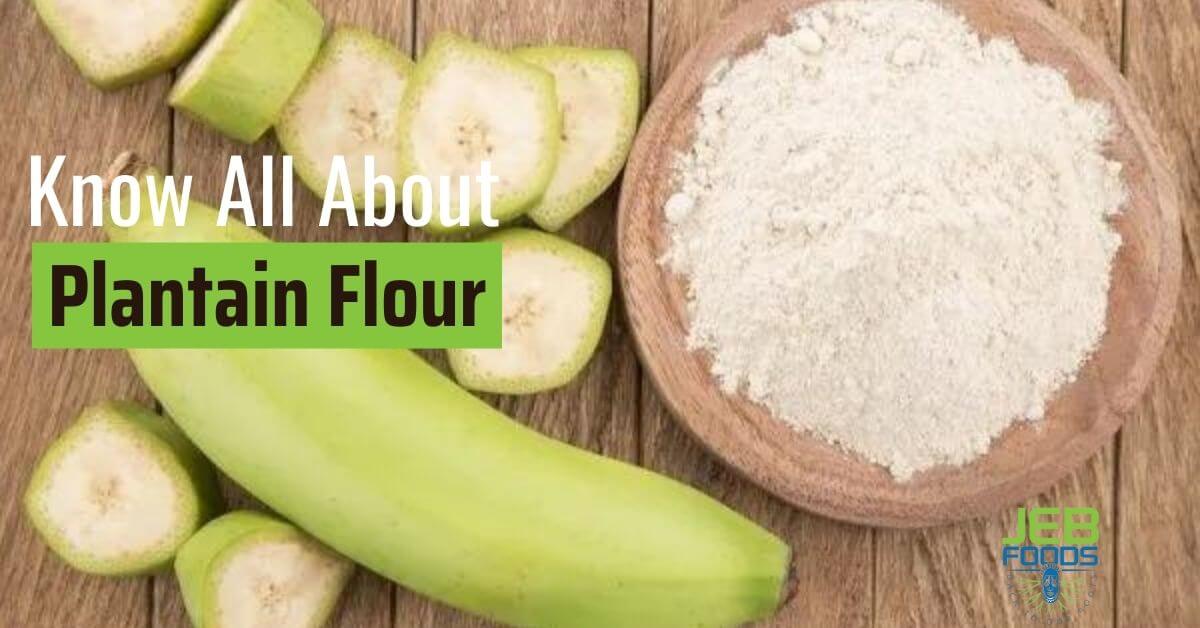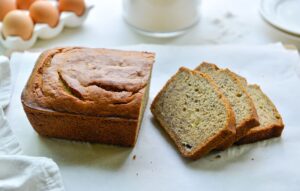Knowing the following tips for baking with cassava flour will take your baking quality from beginner to pro.
I have been a pro baker for the past 8years, and I sure have a lot of tips to give to you in this article.
But, if you are new to cassava flour, I encourage you to learn why cassava flour is the best for baking.
Let me recommend for you Jeb Foods Gluten-free, Grain-free, Nut-free Cassava Flour
Introduction to Baking with Cassava Flour
Table of Contents
ToggleAs a fiber-rich tuberous root vegetable, cassava is gluten-free, grain-free, nut-free, vegan, vegetarian, and paleo.
People on restricted diets must typically blend several flours to achieve the same consistency as wheat flour and may not have the right flours to achieve the desired outcome.
Unlike other gluten-free flour such as almond or coconut flour, Cassava flour has a mild and neutral flavor. It’s also soft and powdery texture, rather than grainy or gritty.
Because of its mild flavor, cassava flour can be used instead of all-purpose flour in baking.
You can also use it instead of wheat flour to coat foods before frying them, such as fried chicken or pan-fried chicken breasts. Expect a crunch and browning similar to regular flour.
Remember that cassava flour is lighter and more absorbent than wheat flour (white or whole wheat).
As a result, cassava flour will be slightly less needed in baked goods than regular flour. In this article, you will find more tips for baking with this flour.
Cassava flour has become a gluten-free baking staple due to its similarity to all-purpose flour.
It has incredible recipes for sweets, such as brownies, chocolate chip cookies, and waffles, which are widely available. It’s also used in gluten-free tortillas, crackers, and pasta.
When it comes to cassava flour, quality always matters, and Jebfoods Cassava Flour is the brand that I use and recommend.
Unfortunately, other brands may produce less than stellar results due to the quality of cassava used and the various ways the flour is processed because it is becoming increasingly popular and manufacturers are springing up all over the place
What Does Cassava Flour Do In Baking
Cassava flour has an earthy, subtly nutty flavor, which isn’t surprising given that it’s made from processing a root vegetable, but it’s worth noting when tasting your finished recipe.
Recipes that use a lot of cassava flour and are thicker/deeper (like loaf cakes) have been difficult.
If the flour directions say you can substitute a cup for a cup, be aware that cassava flour absorbs more water and thus is denser than other flours. You might need to use a little less cassava flour than you think.
Recipes that call for more flour tend to bake faster outside while remaining “doughy” inside.
Cassava flour has a fine dustiness to it. Remember this when you want to toss it around like all-purpose flour.
While not overpowering, this flour is made from a root, and it imparts a nutty flavor to some recipes. Remember this when it comes to the final flavor of any baking project you choose.
How Do You Use Cassava Flour
Unlike other grain-free and gluten-free options, you can easily replace this cassava flour with all-purpose flour and obtain a good, if not great, result.
To put it another way, you don’t have to go to the trouble of making (or buying) gluten-free flour. Let me suggest Jeb Foods Cassava Flour is gluten-free, grain-free, and nut-free to you.
The cassava root vegetable is used to make cassava flour. This is a high-carbohydrate crop with important vitamins and minerals.
It’s a gluten-free wheat flour alternative. It’s prepared from the cassava plant’s dried and crushed root.
Cassava flour is gluten-free. Many people say it is the most similar gluten-free alternative to wheat flour in flavor and texture.
As a result, it’s a great gluten-free alternative to wheat flour in baking and cooking.
It may be used in several different ways, including:
It may be used to replace wheat flour in a range of baking recipes, including:
- muffins
- bread
- cakes
- cookies
- brownies
This is how it is applied.
- In the pasta industry, to make pasta dough.
- It helps to thicken sauces, gravies, and pie fillings.
- Ingredients in Farofa: Farofa is a Brazilian dish prepared from roasted cassava flour and is similar to couscous.
- If you’d want to make grilled tortillas or flatbreads, you can use Cassava flour.
- It absorbs more liquid than wheat flour. A person may thus need to use a smaller amount of cassava flour in a recipe than regular wheat flour.
- Resistant starches are abundant in cassava flour. Consumption of resistant starches may have a variety of health advantages.
The potential health benefits include enhanced digestive and colon health and increased insulin sensitivity. The resistant starch in cassava flour may also help with weight reduction.

Does Cassava Flour Need More Water
Cassava flour absorbs much more than white flour. It absorbs liquid much faster than traditional flour and thus is denser than others.
For gravies and sauces, stir in cassava flour for 2 minutes, until the mixture turns light brown but does not burn. Stir in the broth, salt, and pepper for 3 minutes or until the sauce thickens.
They’ll also keep your sauce clear and free of cloudiness. For each cup of liquid in the recipe, you’ll need about 1 tablespoon.
To make a slurry, combine the cassava flour and equal parts of water and pour it into the pot.
Baking goods that need to rise should be avoided unless cassava flour is combined with other gluten-free flours and binders to achieve the desired result.
Cassava flour is denser and works well on its own in cookies and brownies, but it does not work well in bread that needs to rise significantly.
It should not be used in recipes that call for your food to rise, such as cakes.
Food made with cassava flour is typically denser than all-purpose flour or gluten-containing flour. Cassava flour is ideal for tortillas, pita bread, cookies, and brownies.
Do You Need To Add Xanthan Gum To Cassava Flour
Cassava is a grain-free flour substitute that does not require the addition of xanthan or guar gum.
Although gluten-free flour blends with xanthan or guar gum produce incredible results, cassava flour is a great go-to for texture, flavor, and ease of use if you’re looking for grain-free options.
Cassava flour tortillas, for example, can benefit from the addition of xanthan gum but still come out great without it.
I tested without xanthan gum and got similar results, but they were less soft, chewy, and flaky. I also tried it with a tablespoon of ground chia seeds instead, but those were crispier. Leave out xanthan gum if you are allergic or don’t have it.
Xanthan gum – Xanthan Gum is a plant’s thickening and stabilizing agent. It acts as an emulsifier, allowing liquids that normally clash to mix. It also thickens liquids and batters, increasing their viscosity.
Find out if gluten-free flour can be used with xanthan gum
Is Cassava Flour Self Rising
Cassava flour does not rise well when mixed with yeast due to its lack of gluten, so it is not the best substitute for yeasted baked goods.
One of the few best practices to remember when baking or cooking with cassava flour.
Before mixing cassava flour with wet ingredients, sift it or whisk it to remove any lumps if you substitute cassava flour for all-purpose flour.
Despite its lightweight, the recipe may call for less cassava flour than it asks for because it absorbs more liquid than wheat flour.
You can add more liquid as needed for a more adaptable recipe. Combine cassava flour with other gluten-free flours to make the best baking mix, especially baking.
See here: the best gluten-free flours for baking
Why Is Cassava Flour Gummy
To preserve the texture of the yuca root, I recommend purchasing flour made from younger yuca roots. When tapioca flour is used in cooking, it becomes “gummy,” but this does not happen with cassava flour.
Gluten-free bread can have a gummy result, taste, or appearance due to many factors. It usually occurs due to an unbalanced flour-to-starch ratio.
But, more often than not, it’s a simpler issue than baking or mixing time. Air bubbles also play a role in the final product.
The starch-to-flour ratio specified in the recipe may result in gummy results. If the recipe you’re using contains more than 50% starches, you’ll end up with a very gummy loaf of bread.
Consider this: your recipe’s total flour/starch combination is 100%. A recipe should contain no more than 20 percent – 25 percent of each type of starch.
When it comes to tapioca starch, it can sometimes result in a gummy loaf even if it’s within the 20% range.
Here is the health and nutritional benefits of cassava flour

Why The Use Of Lighter Flours For Baking
A lighter flour must be balanced with a heavier flour to prevent the tapioca starch from making the bread gummy.
Mix the batter thoroughly to create a lighter, air-pocketed batter. Three minutes is not unusual; gluten-free bread dough benefits from a long and thorough mix like regular bread dough.
The smallest change in pan size – a 8 x 4 for a 9 x 5 – can make a huge difference as the size of the pan also matters when it comes to gluten-free baking. The bread rises nicely, does not fall, and bakes evenly every time.
The final recommendation is probably the most difficult to implement. Waiting.
After testing the bread with a thermometer (between 205 and 210 F), turn off the oven, leave a jar oven door, and cool for a few minutes before transferring it to a wire rack.
Allowing the bread to sit in for a few minutes is just what it needs to firm up and avoid a gummy texture.
Freshly baked gluten-free bread tends to be gummy, so allow it to cool completely before cutting into it once it’s ready.
Despite the difference between gluten-free bread and gluten-based bread, gluten-free bread should not be gummy or have an undercooked center. With some troubleshooting, it is possible to make a delicious loaf.
Can You Freeze Cassava Flour
Cassava flour should be stored in an airtight container in a cool, dry pantry. You can refrigerate or freeze the ground flour in an airtight container, but it isn’t necessary.
However, if you’re leaving it for a day or two before grinding, ensure it’s kept in an airtight container to prevent re-humidification.
For unpeeled cassava, store it in a cool, dark, and dry place for up to a week. Peeled cassava root can be stored in the refrigerator for one month if the water is changed every two days or wrapped tightly and frozen for several months.
After boiling for 15 minutes to soften, both cassava varieties can be quick-freeze and then transferred to a regular freezer to keep the frozen condition.
As a result, this method is commercially recommended for storing cassava for three months.
How Does Cassava Flour Taste
Cassava flour has a slightly nutty and earthy flavor, which is not surprising given that it is made from a ground-up root vegetable.
While not overpowering, cassava flour is very mild and neutral in flavor, unlike other gluten-free flours such as almond or coconut flour.
It has a light and fine texture that isn’t grainy or gritty. Instead, it is soft and powdery, similar to regular wheat flour.
Is Cassava Flour Better Than Almond Flour
I will say yes and no. Yes, when it comes to certain recipes that require the consistency of all-purpose flour but are gluten-free.
Cassava is the “go-to option.” As said earlier, cassava flour can be a 1:1 substitution in some recipes.
I will say NO from the nutrition standpoint as Cassava flour isn’t the healthiest flour to eat. It has a high carbohydrate content but a low fiber and protein content compared to alternatives.
Choose higher-nutritional-value flours whenever possible, such as brown rice, chickpea, almond, and coconut flours.
Almond flour has low carbohydrate and high-fat content, making it a popular ingredient in low-carb or keto recipes. It is also gluten-free, so people who follow a gluten-free diet will find it useful for baking.
When substitution is required for almond flour in a recipe, keep in mind that the taste and texture may differ, and other ingredients may need to be adjusted.
Final Thought
In some recipes, cassava flour is a good gluten-free option as a stand-alone flour and mixed gluten-free flour in the gluten-free flour mix.
It is compulsory to incorporate cassava flour because the texture and similarity with all-purpose flour help give the gluten flour mix the balance needed to give your gluten-free baking a perfect result.
Let me recommend for you Jeb Foods Gluten-free, Grain-free, Nut-free Cassava Flour




